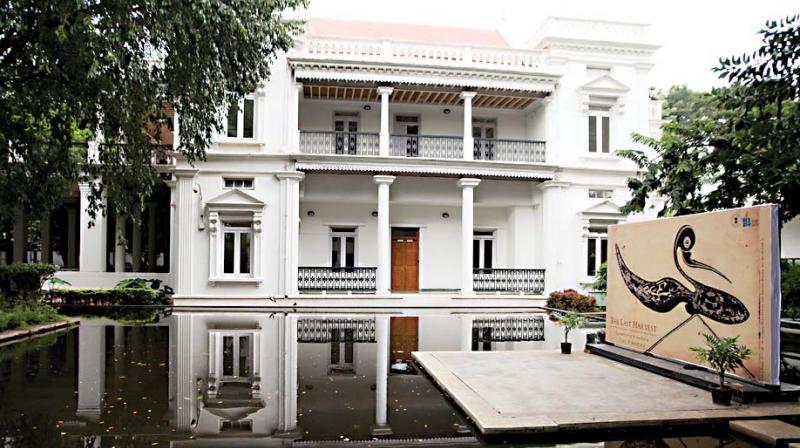When the Tamilians came marching in!

Friday, April 14 marks the New Year for five major communities in India — Tamil Nadu, Kerala, Bengal, Odisha and Assam. On this auspicious weekend, DC looks at the origins and legacy of one of Bengaluru's oldest communities - the Tamilians, whose presence in what is now modern-day Karnataka dates back over a 1000 years, to the reign of Rajendra Chola 1. This integration took place in three major waves — the 10th century when the Cholas invaded Bengaluru, the second during the Vijayanagara period and then in the 18th century when a large number of Tamilians followed the British army to Bengaluru.
 Quaint Bazaar Street in Ulsoor
Quaint Bazaar Street in Ulsoor
"The history of the Tamilian community goes back back to the reign of Raja Raja Chola I and his son, Rajendra Chola, who expanded his empire to Bengaluru,” said architect and urban expert Naresh Narasimhan. “His northernmost outpost in this region was Ilaipakka Naadu, what we call Yelahanka today.” The Chokkanathaswamy Temple, he explained, the oldest in Bengaluru, is a 10th-century Chola monument, located in Domlur. “The biggest move happened during the British rule - a large number of Tamilians followed the army to Bengaluru and settled in the Civil and Military Station, which became Cantonment in 1882. They flourished in the 1920s and 30s, becoming some of the richest people in the city.” Mining baron Manikyavelu Mudaliar built, in the early 1900s, the largest residence after the Raj Bhavan. The house, which is on Palace Road, was handed over to the Ministry of Culture in 2001, after which Narasimhan transformed the 3.5 acre property into the National Gallery of Modern Art. “By the 1920s, members of the community were among the wealthiest in Bengaluru. There was another wave of migration post-Independence as well, as the PSU boom happened,” he added.
In 1938, the Valliappa family founded Sree Valliappa Textiles Limited, which would become one of the largest textile units in the country, here on Millers Road. “We set up our first mill in 1966,” said Mr C Valliappa, founder and Managing Director of the Sona Valliappa Group and a second generation Bengalurean. Over the next decade, the group had established five mills. In 1982, they built the Sona Towers on Millers Road, which went on to play a pivotal role in Bengaluru’s growth as a global IT hub. Software giants Texas Instruments, who moved to India in 1984, the first MNC to do so, set up their office at Sona Towers. “Incidentally, BSNL’s first satellite dish was also put up on our building in 1982,” he explained. His son, Thyagu Valliappa is currently the president of Bangalore Chambers of Industry and Commerce.
Srirampuram, where iron foundries now abound, is home to Sunrise Industrials, one of the largest manufacturers of textile machinery. “My father, C. Arunachalam, visited Bengaluru when he was seven years old, to see the famous Bangalore Karaga,” said A. Narasimhan, Managing partner, The Sunrise Industrials, who ... “He stayed back here, living at his aunt's house near Sangam Theatre, Majestic. Our forefathers are an agricultural community and my father only studied up to the seventh standard as well,” he said. He found himself a day job in Binny Mills, working his way through every department of the factory before beginning his own machine shop. “He was the first man to manufacture lathes for mills in South India and received a gold medal at the Dussehra exhibition in 1958, when he started Sunrise Industrials.”
Working out of a small piece of land in Srirampuram, which eventually expanded to about two acres, Mr Arunachalam revolutionised the agrarian community in Erode, near Coimbatore, offering the farmers there power looms that they could pay for in installments. “People were given incentives to set up their own mills, and agriculturists built a booming industry in the area,” he explained. The Sunrise company also produced India's indigenous car, a three-wheeled, four-door model called Badal. “It wasn't a success but it was taken over by Sipani Automobiles. Renault had approached us for a collaboration but times were very different then and it was turned down by the Central government.”
With influences from the Madras Presidency in the South, the Bombay Presidency in the North and the Nizam's rule in the north-east, only “old Mysuru,” concluded Naresh Narasimhan, “identifies with Karnataka culture. Perhaps that's why we have always had such a troubled identity as a state.” The journey is, like all others, marked by highs and lows and our variegated influences have, for better or for worse, shaped the course of the Bengaluru's history, transforming it into the city we know today.

